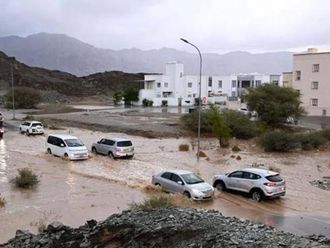Muscat: A researcher at Sultan Qaboos University (SQU) advocates maximising the use of reclaimed water or tertiary treated wastewater for farming seasonal crops, especially in the northern region of Oman.
Saif Ali Salim Al Khamisi, who did his PhD at SQU’s College of Agricultural & Marine Sciences, has pointed out in his study that maximum use of recycled water would also reduce the disposal of reclaimed water into the sea and minimise the stress on groundwater zones in the country.
The Head of Field Crops Research at the Directorate General of Agricultural and Livestock Research at the Ministry of Agriculture & Fisheries (MoAF) believes that the use of reclaimed water will help in farming of seasonal crops such as wheat, maize and cowpea in Batinah region.
Reclaimed water or recycled water is former wastewater (sewage) that is treated to remove solids and certain impurities, and used in sustainable landscaping irrigation or to recharge groundwater aquifers.
“In order to combat water scarcity and conservation of water resources, there are plans to transfer reclaimed water from different sewage treatment plants (STPs) in Muscat to agricultural lands in Batinah region,” he revealed.
The thickly populated northern area of Oman accounts for more than 60 per cent of the total agricultural land area in the country. Explaining the reason behind plans to transfer reclaimed water from Muscat to Batinah, he said that Muscat alone produces 80,000 cubic metres of reclaimed water per day. Only 54 per cent of that is used for irrigating the gardens and trees along the highways in Muscat, he pointed out in a statement issued by the SQU on Monday.
He said that over 55 sewage treatment plants in Oman’s different governorates produce more than 100 million cubic metres of reclaimed water per year, which can be used for irrigation. “Agriculture in Oman contributes to partial food sovereignty and forms an important part of rural livelihoods. It accounts for 3.2 per cent of the GDP in Oman in which fruits occupy an area of 53 per cent followed by perennial forages (30 per cent), vegetables (11 per cent) and field crops (6 per cent),” he said.
His study focused on the use of reclaimed water, supplemented by groundwater, by identifying short season crops, and changing the area under cultivation of such crops. The study found that by using reclaimed water in conjunction with ground water, cropping area more than doubled from 1353 ha to 3781 ha. Of the total irrigation requirement of 24.24 million cubic metres, 57.6 per cent was to be met with reclaimed water and 42.4 per cent with groundwater.
“Therefore, the planners should consider piping reclaimed water to areas where groundwater of good quality is available to conjunctively use and meet crop water requirements for irrigating wheat, cowpea and maize on a rotational basis. This will prevent disposal of reclaimed water to the sea and minimise stress on fresh groundwater zones,” Al Khamisi said.











